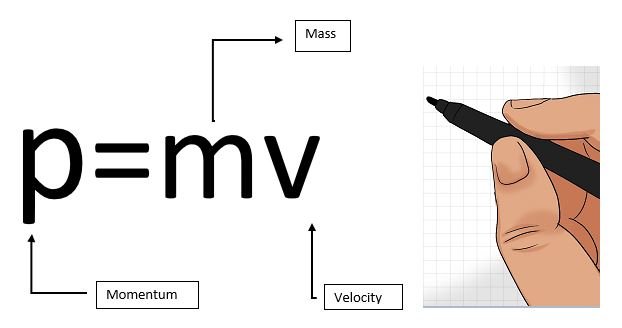Momentum, units, examples
momentum-units-examples

Momentum
What is momentum?
Momentum is the measurable amount of motion of a body or object, which is used in science to determine the amount of motion. Momentum can have different meanings depending on the context, but in general, it refers to the amount of motion or force that an object possesses.
Physics momentum:
In physics, momentum is defined as the product of an object's mass and velocity.
Momentum equation:
Mathematically, momentum (p) is represented by the equation:
p = mv
Moment = Mass x Velocity
where m is the mass of the object and v is its velocity.
Momentum is a vector quantity, which means that it has both magnitude and direction.
In a broader sense, momentum can also refer to the strength or energy that an activity or process gains and maintains over time.
Unit:
Moment is measured in kilogram meters per second (kg m/s) or, equivalently, Newton seconds (N s).
Explanation:
To better understand momentum, let's break down its components:
Mass: Mass is the amount of matter in an object. It is a measure of an object's inertia, that is, its resistance to changes in motion. Objects with more mass have more inertia and require more force to accelerate or decelerate.
Mass is usually measured in kilograms (kg).
Velocity: Velocity refers to the speed of an object in a particular direction. This is the speed at which an object changes position. The speed depends on both the speed of the object and the direction of its motion.
Speed is usually measured in meters per second (m/s).
Momentum is a useful concept because it helps us understand how objects behave when they interact with each other.
Momentum concept:
The concept of momentum is important in several areas of physics such as mechanics, collisions and fluid dynamics. It provides insight into the behavior of objects during an interaction, enabling us to analyze and predict the outcomes of those interactions.
For example, in finance, momentum refers to the tendency of a security's price to continue moving in the same direction as it has been moving in the recent past. In psychology, momentum can refer to te emotional or cognitive forcethat influence's a person's behaviour or decision making.
Momentum in daily life:
A daily life example of momentum is a person riding a bicycle. As the person pedals, the bicycle gains momentum, which is the product of the mass of the bicycle and the velocity at which it is moving. Once the bicycle has gained momentum, it is harder to stop or change its direction because of its increased inertia. Therefore, the cyclist has to apply brakes or steer the bicycle carefully to bring it to a stop or change its direction.
Momentum example:
An example of momentum can be seen in a game of pool. When the cue ball strikes another ball, the momentum of the cue ball is transferred to the other ball, causing it to move. The amount of momentum transferred depends on the mass and velocity of the cue ball, as well as the angle of impact.
Another example of momentum is when a car is driving down a highway. The car has a certain amount of momentum based on its mass and velocity. If the driver suddenly applies the brakes, the car's momentum will cause it to continue moving forward, even though the wheels have stopped turning. This can cause the car to skid or slide, and it is why it is important to keep a safe following distance when driving.
Calculate momentum:
Determine the linear momentum of a body whose mass is 50kg moving with a speed of 10m/s.
Solution:
Given parameters are,
m = 50 kg
v = 10m/s
Linear momentum formula is expressed as,
P = mv
p = 50 x 10
p = 500 kgm/s
What's Your Reaction?





















